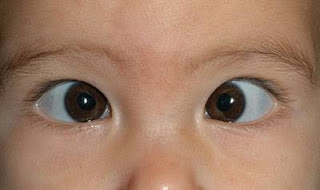An optometrist is an eye doctor.Optometrists examine eyes for both vision and health problems, and correct refractive errors.
Wednesday, 23 November 2016
Inside Deviation of the Eye in Childrens
FREQUENCY OF ALL TYPES OF ESOTROPIA AMONG THE PATIENTS WITH OCULAR DEVIATIONS OF AGE GROUP OF 2-18 YEARS
ABSTRACT BY OPTOMETRIST ABID HUSSAIN
Background: Convergent squint is the mostly common form of strabismus constituting 1/2 to 2/3 of all misaligned eyes.The prevalence of comitant convergent squint varies in different parts of the world.Strabismus is a common disorder that affects 3% to 5% of children, In Pakistan, children under the age of 15 years account for 45% of the total population.8 The overall estimated prevalence of strabismus in Pakistan is 5.4%.8 Out of this 2.5% strabismus patients are under the age of the 5 years while 2.9% patients are over the age of 5 years.8 The national prevalence of squint of 5.4% suggests that there are 7.0million patients with strabismus in a populationof130million.
Aim: To find out the frequency of all types of esotropia among the patients age group of 3 to 12 years attending ophthalmology out-patient department at Benazir Bhutto Hospital during the time period of three months. Methods: A total of 50 consecutive strabismus patients were examined attending the out-patient department within the time period of two months, according to the set criteria. Data was recorded on a performa. Detailed strabismus evaluation was done including VA measurement with Snellen and Lea symbols or assessed qualitatively through light fixation and follow; and by performing Cover tests and Krimsky test. All these tests were performed without glasses and with glasses in patients having any previous prescription, and at near and distance both. Cycloplegic refraction was performed on children, by dilating them with 0.5% cyclopentolate eyedrops.
Results: Overall occurrence of Esotropia was found to be 100%, with much greater frequency of Comitant type.Out of which 57.1% was Accommodative ET, followed by 42.8% Constat ET.No pure vertical deviations were seen,but 2.8 % patients had co-existing vertical deviations with horizontal deviations.
Conclusion: Comitant strabismus is more occurring than incomitant.There was no incomitant case reported.Mostly occurring types are Accommodative ET and Constant ET. Amblyopia and refractive errors are often associated with it.
Subscribe to:
Post Comments (Atom)


No comments:
Post a Comment